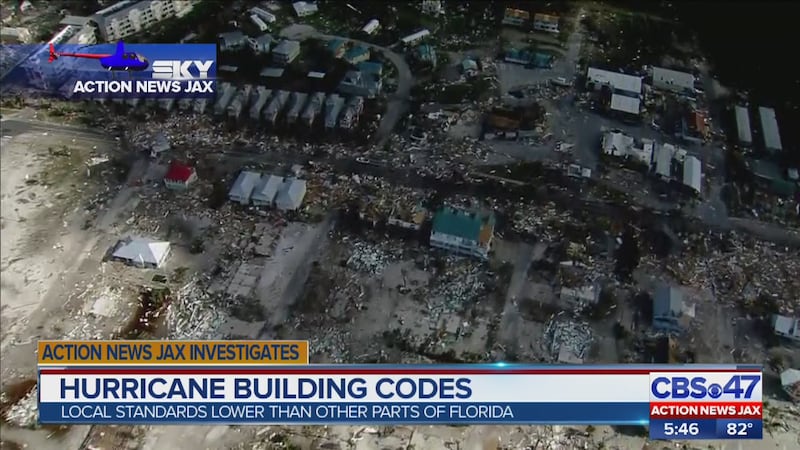JACKSONVILLE, Fla. — Hurricanes have proven to be costly in Florida.
Most recently, Category 5 Michael devastated parts of the Florida Panhandle last October. As Andrew showed South Floridians in 1992, followed by Charley in 2004 and Irma in 2017, strong, well-built homes can withstand the powerful winds of one of Mother Nature's most powerful storms.
"Since Andrew, with these innovations, these additions to the building code, we've seen it now after Irma, after Michael that building codes work, that building better, stronger ... surviving the storm saves everybody money," said Erik Salna, of the International Hurricane Research Center at Florida International University.
TRENDING:
- Jacksonville Jaguars' Jalen Ramsey arrives at training camp in armored truck
- School rejects offer to pay $22,000 in delinquent student lunch bills
- Jacksonville wedding photographer could face additional charges
- JFRD: Children injured in apartment fire on Moncrief Road
- Kid Care Report: Jacksonville day care tagged for violations by DCF inspector
But an inspection of the map of Florida building codes is cause for concern. Based more on probability versus reality, codes for most of Duval County and much of Northeast Florida are based on peak winds of 115-130 mph versus 170-180 mph winds for more hurricane prone far South Florida and the Keys and versus 130-150 mph for parts of the Panhandle.
"History shows that wind loads in this area haven't been as high. We get direction from the state what to design to," said Thomas Goldsbury, Chief of Building Inspection for the City of Jacksonville.
Jacksonville and surrounding areas have some of the lowest maximum wind building codes in all of Florida based on the near nil probability that a catastrophic hurricane will hit us here at home. So are we tempting fate?
"Florida is the hurricane capital of the U.S. We should lead the U.S. in the building codes across all of our coastlines because it can happen along any of our coastlines during any hurricane season," Salna said. "We could one day get a major hurricane in Jacksonville. You have to look at it that way and adjust the building code accordingly."
The wall of wind at Florida International University can really simulate what happens in a hurricane. First of all, that wind is funneled through the backside to increase the wind speed up to Category 5 -- that's up to 160 mph. The surface is sort of rugged, if you will, to represent houses and trees and businesses because that affects the wind flow, too.
STAY UPDATED: Download the Action News Jax app for live updates on breaking stories
"So, when that wind hits this structure, it's as close to mother nature as we can create," Salna said. "We have shown that there still are ways we can enhance building codes not only in Florida but across the nation."
It's important to realize that you can build "above" code.
"Codes are the minimum. You can always ask your architect, engineer, 'I want my house 20% higher wind load. It'll cost, but that's your call," Goldsbury said.
"For every dollar spent on mitigation, (it) saves us $6 on the back end. That makes fiscal sense. We have to do it," Salna said.
U.S. landfalling hurricanes so far this century have shown building codes work. Newer construction with stronger codes fare far better than old construction.
Cox Media Group








